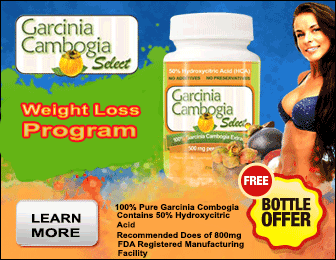You are a mineral body
Every part of you is made from minerals - your bones, cell structure, lymph liquid, arteries, organs, tissue, muscle, hair, and so on. You cannot live without minerals. Your body does not produce minerals.
Where do you get your minerals? You get them from vegetables and fruits and good supplements. Since only 10% of the people eat enough fruits and vegetable, the rest of you are deficient in minerals.
If we eat enough vegetables and fruits, why do we have to take a mineral supplement?
Long time ago when the soil was rich in minerals, vegetable and fruits were jammed pack with minerals. Fruits and vegetables were not picked early, frozen, waxed, radiated, or stored in argon gas. Those who ate these vegetables and fruits obtained an adequate supply of minerals and seldom has a deficiency.
Today the opposite is true. You and I cannot get enough minerals from eating fruits and vegetables. Now we eat more cooked vegetables, more vegetables in packages, fruits and vegetables that are waxed, and vegetables from other countries not processed properly.
Today, we need to supplement our eating habits with a live mineral liquid to make up for the lack of minerals in the good food and junk food we eat.
Here is a partial list of illnesses and their related mineral deficiencies and below each mineral is the food that is highest in that mineral.
* Calcium - receding gums, PMS, panic attacks, muscle cramps, lungs weak, low back pain, kidney stones, insomnia, bone weakness, bone spurs, calcium deposits.
** Foods - cheeses, cottage cheeses, dulse, greens, kelp, goat milk, sesame seeds, unrefined cereal grains, seeds and almonds.
* Sodium - restless nerves, poor eyesight, mental confusion, lack of saliva, frontal headache, white coated tongue, cracking joints, fatigue, offensive breath, stiff tendons, stiff joints
** Foods - goat milk, goat whey, black mission figs, apples, apricots, kale, kelp, prunes, raisins, strawberries, sunflower seeds, black olives, celery, dulse, asparagus, greens
*Potassium - fearfulness, mental illness, low energy, pains and aches, body acidity, tendency toward violence, suspiciousness, loss of ambition, nervousness, negativity
* Foods - black olives, dulse, potato peeling broth, bitter greens, kelp, Irish moss, various seeds and nuts, apple cider vinegar, soy milk, spinach, goat milk, grapes, apples, bananas, cheese, cucumbers, fish, dale, lettuce
* Magnesium - A.D.D., anorexia, arterial calcification, low calcium absorption, convulsions, depression, gastrointestinal disturbances, growth failure, menstrual migraines, osteoporosis, tremors, hot temper, fainting
** Foods - seeds and nuts, yellow cornmeal, rice polishings, wheat germ, avocados, coconuts, spinach, goat milk, grapes, honey, whole wheat
* Phosphorus - constant weakness, neuralgia, numbness, lack of confidence, slow oxygenation, sensitive to noise or criticism, fatigue
* Foods - meat, egg yolk, dairy products, fish, almonds, rice bran, pumpkin seeds, soybeans, lentils, sunflower seeds, almonds, various types of beans, carrots, pecans, lentils, cabbage
* Manganese - A.D. D., asthma, carpal tunnel syndrome, convulsions, loss of libido, miscarriage, retarded growth rate, still birth, TMJ, nightmares
** Foods - black walnuts, and other nuts and seeds, pineapple, parsley, leaf lettuce, celery, blueberries, black eyed peas, apricots
* Copper - A.D.D., anemia, arthritis, behavior-violent, cerebral palsy, high cholesterol, eyelids sagging, gray or white hair, hernia, liver cirrhosis, learning disabilities, low blood sugar, slow healer, high risk of strokes, varicose veins
** Foods - liver, sea foods, almonds, greens, leafy vegetables, whole grain cereals
* Selenium - age spots, aging skin, Alzheimer?s, cancer, cystic fibrosis, fatigue, heart palpitations , HIV, hypothyroidism, liver damage, muscular weakness, scoliosis
** Foods - wheat germ, bran, whole grains, onions, broccoli, eggs, seafood's, milk products, meat, asparagus, tomatoes, mushrooms, nuts
* Iodine - goiter, menstrual difficulties, thinking confused, heart and lung problems
** Foods - kelp, fish, dulse, sea plants, watermelon, okra, mustard greens, green peppers, eggplant, brussels sprouts, carrots chives, artichokes, agar
* Iron - fatigue, low auto-immunity, anemia, depression, low blood pressure, slow speech, poor memory, susceptibly to colds
** Foods - greens, unsulphured dried fruits, dulse, kelp, Irish moss, black cherries, black berries, liquid chlorophyll, strawberries, celery, spinach, rice polishings sunflower seeds, blackstrap molasses, eggs, goat milk, pinto beans
* Zinc - A.D.D., hair loss, congenital birth defects, body odor, brain defects, diarrhea, slow healer, heart defects, hernia, impotence, lung defects, prostate enlargement, loss of sense of smell, short stature, webbed toes
* Foods - goat milk, brewer's yeast, pumpkin seeds, wheat germ, wheat bran, high protein foods, cow's milk
* Chromium - A.D.D., unexpected weight loss, low sperm count, pre diabetes, manic depression, learning disabilities, impaired growth, hyperactivity, coronary blood vessel disease, cataracts, low blood sugar
* Foods - brewer's yeast, whole grain cereals, clams, meat, cloves and spices, corn oil.
There are more minerals than the ones listed above. This is just a start, so that you can see why minerals are so important. A consistent lack of a specific mineral can lead to a serious illness.
Rudy Silva has a Physics degree from the University of San Jose California and is a Natural Nutritionist. He has written an ebook called ?How to Relieve Your Constipation with 77 Natural Remedies.? You can get more information on this ebook and more constipation remedies at this site. http://www.stop-constipation.com












